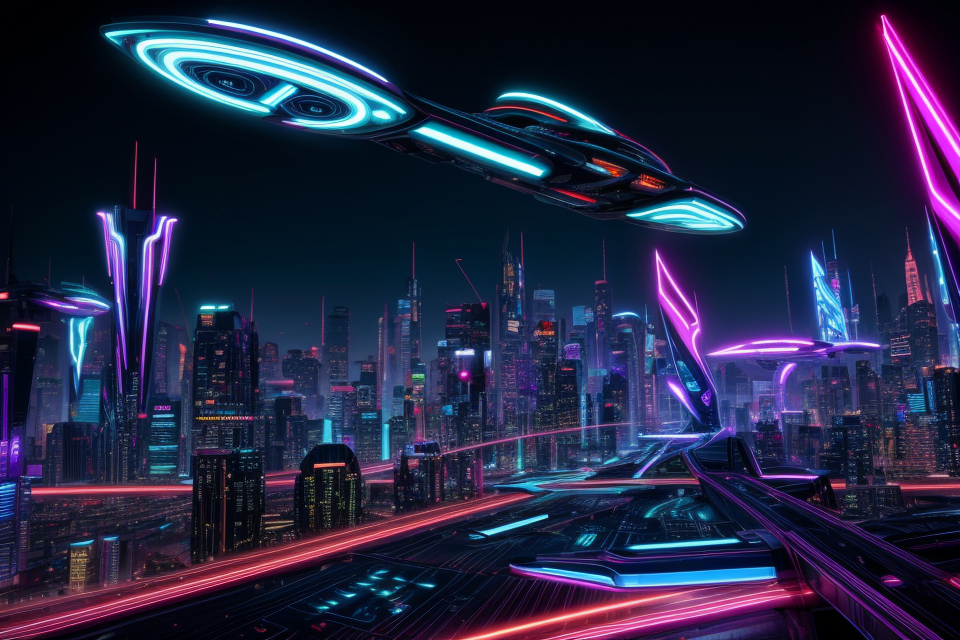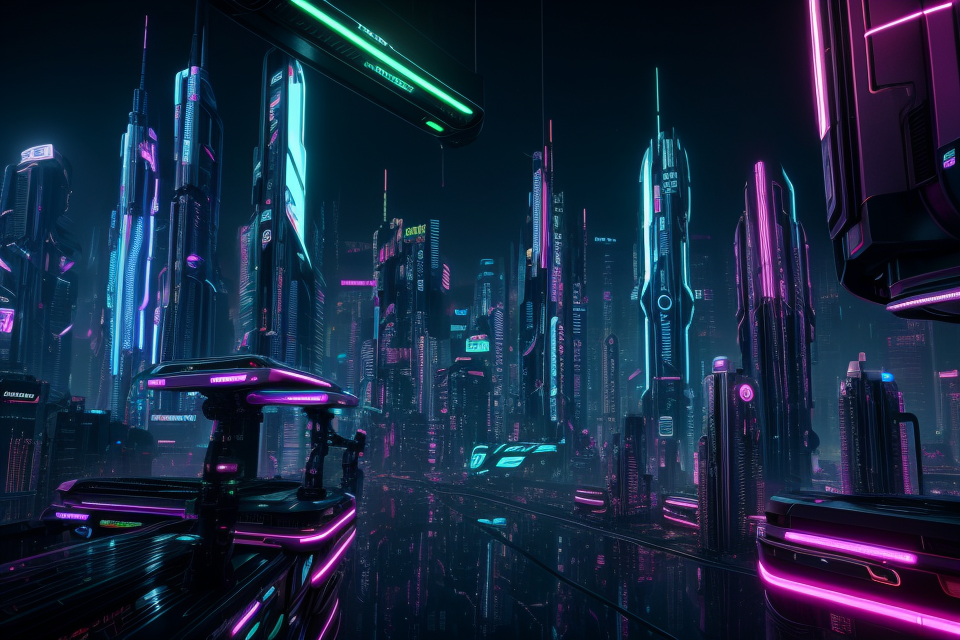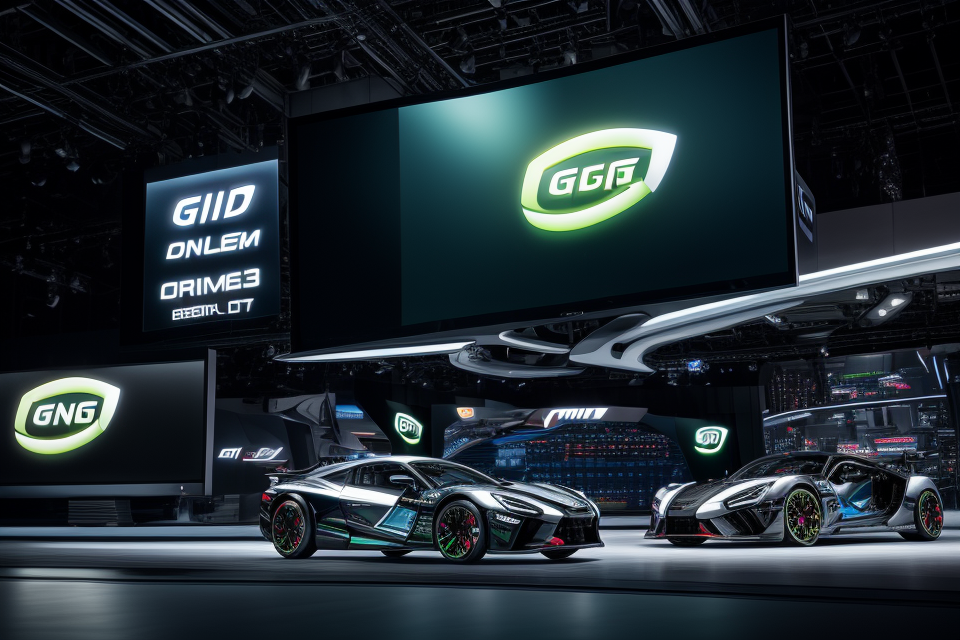
The graphics processing unit (GPU) has come a long way since its inception. Today, it is an essential component in every computer system, providing the necessary horsepower to render graphics and visual effects with stunning accuracy and speed. With the advent of advanced technologies such as AI, machine learning, and virtual reality, the demand for powerful GPUs has skyrocketed. In this article, we will explore the future trends of GPUs and the impact they will have on the technology industry. From real-time ray tracing to the integration of AI, we will delve into the latest advancements in graphics card technology and what they mean for the future of computing. Get ready to be amazed by the incredible potential of GPUs and the limitless possibilities they offer.
The Evolution of GPUs
The History of Graphics Cards
The first graphics cards were simple hardware devices that were designed to render basic shapes and text on a computer screen. These early graphics cards were not very powerful and could only display simple graphics.
The rise of 3D graphics marked a significant turning point in the history of graphics cards. With the advent of 3D graphics, graphics cards became more powerful and capable of rendering complex 3D models and environments. This led to the development of advanced 3D graphics APIs such as DirectX and OpenGL, which enabled game developers to create more immersive and realistic games.
The introduction of programmable shaders was a game-changer for graphics cards. Shaders are small programs that run on the graphics card and are used to manipulate and modify the visual output of a game or application. With programmable shaders, graphics card manufacturers were able to create more powerful and flexible graphics cards that could handle complex graphics and visual effects. This led to the development of cutting-edge graphics technologies such as real-time ray tracing and physically-based rendering, which are now widely used in modern games and applications.
Overall, the history of graphics cards has been one of continuous evolution and improvement, driven by the need to create more immersive and realistic visual experiences. As graphics cards continue to advance, we can expect to see even more powerful and capable graphics technologies emerge, pushing the boundaries of what is possible in the world of computer graphics.
The Current State of Graphics Cards
- Dominance of NVIDIA and AMD
The graphics card market has been dominated by two major players, NVIDIA and AMD, for several years. Both companies have been consistently releasing new graphics card models with improved performance and features. NVIDIA has been particularly successful in the high-end market, with its GeForce RTX series of graphics cards, while AMD has focused on providing more affordable options for mainstream consumers.
- Impact of ray tracing and real-time rendering
Ray tracing and real-time rendering have had a significant impact on the graphics card market. Ray tracing is a technique used to simulate the behavior of light in a scene, resulting in more realistic lighting and shadows. This technology has become increasingly important in the gaming industry, with many game developers incorporating ray tracing into their games to enhance the visual experience. Real-time rendering, on the other hand, is the ability to render high-quality graphics in real-time, which is essential for applications such as virtual reality (VR) and augmented reality (AR).
- Importance of VR and AR
VR and AR technologies have also played a significant role in the evolution of graphics cards. VR requires a high level of graphics processing power to render realistic environments and objects, while AR requires the ability to overlay digital information onto the real world. As these technologies continue to evolve, the demand for graphics cards that can handle the complex graphics processing required for VR and AR applications is expected to increase.
The Future of GPUs
Emerging Technologies
- AI and machine learning
- GPUs have become increasingly important in the field of artificial intelligence and machine learning due to their ability to process large amounts of data quickly.
- With the rise of deep learning algorithms, GPUs have proven to be the ideal hardware for training neural networks, providing a significant speedup over traditional CPUs.
- As AI and machine learning continue to advance, we can expect to see even more specialized GPUs designed specifically for these tasks.
- Real-time ray tracing
- Real-time ray tracing is a technique used to simulate the behavior of light in a scene, creating more realistic lighting and shadows in video games and other 3D applications.
- Traditionally, ray tracing has been too computationally intensive to be used in real-time applications, but advances in GPU technology have made it possible to perform ray tracing in real-time.
- With the increasing demand for more realistic graphics in games and movies, real-time ray tracing is likely to become a more prevalent technology in the future.
- Cloud gaming
- Cloud gaming is a service that allows users to stream games over the internet instead of downloading and installing them on their local devices.
- Cloud gaming relies heavily on GPUs to provide the necessary processing power to render games in real-time over the internet.
- As internet speeds continue to improve and cloud gaming services become more popular, we can expect to see even more advanced GPUs designed specifically for cloud gaming.
The Impact of 5G
- Faster internet speeds
- The fifth-generation wireless technology, commonly known as 5G, is set to revolutionize the way we access and use the internet. With its faster data transfer rates and reduced latency, 5G promises to provide a more seamless and efficient online experience.
- One of the key benefits of 5G is its ability to deliver data at much higher speeds than previous generations of wireless technology. This means that users can expect faster download and upload times, which is particularly beneficial for activities such as streaming high-definition video or playing online games.
- Additionally, 5G’s lower latency means that there is less delay between sending and receiving data. This is particularly important for real-time applications such as online gaming, video conferencing, and virtual reality experiences, where even small delays can cause noticeable lag or buffering.
- Overall, the faster internet speeds offered by 5G have the potential to greatly enhance the user experience and enable new applications and services that were previously not possible.
- More reliable connections
- Another significant benefit of 5G is its improved reliability compared to previous wireless technologies. With 5G, users can expect fewer dropped connections and interruptions, which is particularly important for critical applications such as remote surgery or industrial automation.
- The increased reliability of 5G is due to several factors, including the use of multiple antennas and advanced signal processing techniques. These technologies allow 5G networks to better handle interference and provide more consistent coverage, even in challenging environments such as densely populated urban areas or remote rural locations.
- Additionally, 5G’s use of advanced error correction and detection algorithms further enhances its reliability by allowing it to quickly identify and correct errors in real-time.
- Overall, the improved reliability of 5G has the potential to transform industries and enable new use cases that require constant and dependable connectivity.
The Future of VR and AR
- Advancements in Graphics: The future of VR and AR technology is expected to bring more advanced graphics. This includes improved lighting, textures, and shading that will provide users with a more immersive experience.
- Improved User Experiences: As the technology advances, the user experience in VR and AR will improve significantly. This includes the elimination of motion sickness, reduced latency, and increased precision.
- New Use Cases: With the advancements in VR and AR technology, there will be new use cases that were previously not possible. This includes the ability to create virtual environments for training, education, and entertainment. Additionally, AR technology will find new applications in fields such as medicine, construction, and design.
Overall, the future of VR and AR technology is exciting and holds a lot of potential for new and innovative applications. The advancements in graphics, user experience, and new use cases will continue to drive the development of this technology.
The Future of Gaming
The Next Generation of Consoles
Introduction
The next generation of gaming consoles, PlayStation 5 and Xbox Series X, have been making waves in the gaming industry. These consoles promise to deliver improved graphics and performance, as well as new features and capabilities that will enhance the gaming experience.
PlayStation 5
The PlayStation 5, developed by Sony, is a powerful gaming console that promises to deliver an unparalleled gaming experience. With its advanced hardware and software, the PlayStation 5 is capable of rendering graphics at an ultra-high resolution, resulting in a more immersive gaming experience.
Xbox Series X
The Xbox Series X, developed by Microsoft, is a highly anticipated gaming console that promises to deliver cutting-edge graphics and performance. With its advanced hardware and software, the Xbox Series X is capable of rendering graphics at an ultra-high resolution, resulting in a more immersive gaming experience.
Improved Graphics and Performance
One of the most significant improvements in the next generation of consoles is the enhanced graphics and performance. Both the PlayStation 5 and Xbox Series X are equipped with advanced hardware and software that enable them to render graphics at an ultra-high resolution, resulting in a more immersive gaming experience. Additionally, both consoles have improved processing power, allowing for smoother gameplay and faster load times.
New Features and Capabilities
The next generation of consoles also promises to deliver new features and capabilities that will enhance the gaming experience. For example, the PlayStation 5 and Xbox Series X both have built-in virtual reality (VR) and augmented reality (AR) capabilities, allowing players to experience games in a more immersive way. Additionally, both consoles have improved input lag, resulting in more responsive gameplay.
Conclusion
In conclusion, the next generation of consoles, PlayStation 5 and Xbox Series X, promises to deliver an enhanced gaming experience with improved graphics and performance, as well as new features and capabilities. These consoles are equipped with advanced hardware and software that enable them to render graphics at an ultra-high resolution, resulting in a more immersive gaming experience. With their improved processing power, built-in VR and AR capabilities, and more responsive gameplay, the PlayStation 5 and Xbox Series X are sure to take the gaming industry by storm.
The Future of PC Gaming
GPUs play a crucial role in determining the performance of a gaming PC. With the rise of advanced gaming technologies such as virtual reality and augmented reality, the demand for powerful GPUs has increased significantly.
- The impact of GPUs on gaming performance: The performance of a gaming PC is directly proportional to the power of its GPU. A high-end GPU can provide smoother frame rates, higher resolutions, and more realistic graphics, leading to an immersive gaming experience. As technology advances, we can expect to see even more demanding games requiring more powerful GPUs.
- The rise of eSports and competitive gaming: eSports has gained significant popularity in recent years, with many professional gamers competing in tournaments and leagues. With the growth of eSports, there is an increasing demand for powerful GPUs that can handle the demands of competitive gaming. High-end graphics cards are essential for achieving high frame rates and low latency, which are critical for competitive gaming.
- The importance of graphics cards for streaming and content creation: In addition to gaming, graphics cards are also essential for content creation and streaming. Many content creators use powerful GPUs to edit videos, create graphics, and render 3D models. Streaming platforms such as Twitch and YouTube also require powerful GPUs to provide high-quality video streams. With the growth of online content creation, the demand for powerful graphics cards is likely to increase in the future.
The Future of Graphics Cards
The Next Generation of Graphics Cards
The Development of New Technologies
The next generation of graphics cards will see significant advancements in technology. These advancements will be driven by the demand for more powerful and efficient graphics processing capabilities. One of the key areas of focus will be the development of new materials and manufacturing processes that will enable the production of smaller, more powerful graphics cards. Additionally, there will be a focus on developing new algorithms and software that can take advantage of the increased processing power of these new graphics cards.
The Impact of Emerging Trends
Emerging trends such as virtual reality (VR) and augmented reality (AR) will also play a significant role in shaping the future of graphics cards. As these technologies become more widespread, there will be a greater demand for graphics cards that can handle the increased processing requirements of these applications. This will drive the development of new graphics cards that are specifically designed to meet the needs of VR and AR applications.
The Importance of Power Efficiency and Cooling Solutions
Power efficiency and cooling solutions will also be critical factors in the development of the next generation of graphics cards. As graphics cards become more powerful, they will also generate more heat, which can impact their performance and lifespan. Therefore, there will be a greater focus on developing cooling solutions that can effectively dissipate heat while minimizing noise levels. Additionally, there will be a focus on developing more power-efficient graphics cards that can reduce energy consumption and lower operating costs.
Overall, the next generation of graphics cards will be characterized by a focus on developing smaller, more powerful cards that can handle the increased processing demands of emerging technologies such as VR and AR. Additionally, power efficiency and cooling solutions will be critical factors in the development of these new graphics cards.
The Future of Graphics Card Companies
The competition between NVIDIA and AMD
NVIDIA and AMD are the two leading graphics card companies in the market. They have been competing with each other for years, and this competition has led to significant advancements in graphics card technology. Both companies are constantly pushing the boundaries of what is possible with graphics cards, and this competition is beneficial for consumers as it drives innovation and keeps prices competitive.
The impact of emerging technologies on the market
Emerging technologies such as artificial intelligence, virtual reality, and augmented reality are having a significant impact on the graphics card market. As these technologies become more prevalent, there will be an increased demand for graphics cards that can handle the processing requirements of these applications. This will likely lead to the development of new graphics card technologies and designs that are specifically tailored to meet the needs of these emerging markets.
The future of graphics card design and innovation
As the demand for more powerful graphics cards continues to grow, we can expect to see continued innovation and development in this area. There are several potential areas of focus for future graphics card design, including increased performance, improved power efficiency, and better cooling solutions. Additionally, there may be a shift towards more specialized graphics cards that are designed specifically for certain applications or markets, such as gaming, professional visualization, or machine learning.
Overall, the future of graphics card companies looks bright, with continued competition, innovation, and demand for more powerful and specialized graphics cards. As these technologies continue to evolve, we can expect to see exciting new developments in the world of graphics card technology.
FAQs
1. What is a GPU?
A GPU (Graphics Processing Unit) is a specialized type of processor designed specifically for handling graphical tasks, such as rendering images and animations. Unlike a CPU (Central Processing Unit), which is designed for general-purpose computing, a GPU is optimized for parallel processing, making it well-suited for tasks that require large amounts of mathematical calculations, such as those found in video games, movies, and other multimedia applications.
2. What is the difference between a GPU and a CPU?
The main difference between a GPU and a CPU is their architecture and the types of tasks they are designed to handle. CPUs are designed for general-purpose computing and are capable of handling a wide range of tasks, from simple arithmetic to complex algorithms. GPUs, on the other hand, are specialized processors designed specifically for handling graphical tasks, such as rendering images and animations. While CPUs are optimized for sequential processing, GPUs are optimized for parallel processing, which makes them much faster at handling tasks that require large amounts of mathematical calculations.
3. What is the future trend of GPU?
The future trend of GPU is towards even greater levels of performance and efficiency. Manufacturers are continually improving the architecture of GPUs, increasing their parallel processing capabilities, and reducing their power consumption. This will enable GPUs to handle even more complex graphical tasks, such as real-time ray tracing and virtual reality, with greater speed and efficiency. Additionally, as artificial intelligence and machine learning become more prevalent, GPUs will play an increasingly important role in these fields, as they are well-suited for handling the large amounts of mathematical calculations required for these applications.
4. What are some of the most popular GPU brands?
Some of the most popular GPU brands include NVIDIA and AMD. NVIDIA is known for its high-performance graphics cards, such as the GeForce series, while AMD is known for its powerful CPUs and GPUs, such as the Radeon series. Both companies are continually innovating and improving their products, and their graphics cards are widely used in a variety of applications, from gaming to professional visualization.
5. How do I choose the right GPU for my needs?
Choosing the right GPU depends on your specific needs and the type of applications you will be using. If you are a gamer, you will want a GPU that is optimized for gaming, with features such as fast frame rates and low latency. If you are a professional, you may require a GPU with more advanced features, such as support for virtual reality or real-time ray tracing. Additionally, you will want to consider the budget and power requirements of the GPU, as well as the compatibility with your existing hardware. It is always a good idea to do research and compare different options before making a purchase.


